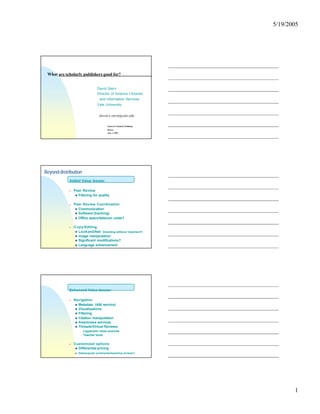This document discusses the role of scholarly publishers in the digital age and the challenges they face. It notes that publishers provide value through peer review, editing, and navigation/search features for online content. However, digital content has characteristics like dynamic updates and various file formats that impact archiving and access over time. New models are needed to address issues like long-term preservation, customized access options, and integrating related datasets. Publishers will need to explore alternative revenue sources beyond annual subscriptions to support these evolving roles and responsibilities. Collaboration across institutions will be important to develop solutions and standards.






